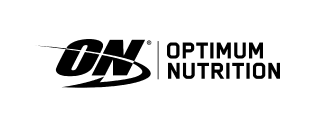It’s a well known fact that eating plenty of fresh fruit and vegetables is essential for good health. They provide a dense supply of vitamins, minerals, trace minerals, antioxidants, fatty acids, fibre and are mostly fat and cholesterol free. Research has shown that a diet rich in fresh fruit and vegetables reduces the risk of chronic disease.
Statistics from 2011-2012 showed that 48.3% of Australians over 18 years indicated that they met the guidelines for daily fruit intake but only 8.3% met the guidelines for daily vegetable intake in that year.
Fresh is best but is that what you are buying?
Feeding our growing population has meant that:
- There is a fast turnover in conventionally grown fruit and vegetables.
- Our soils are consequently depleted of many minerals and our crops are sprayed with various pesticides, fungicides and herbicides.
- Most fruit and vegetables are picked before they ripen, placed in storage, transported, marketed and then finally artificially ripened.
- They lack vitamins and minerals and their wonderful antioxidant properties.
So what can you do to ensure you’re getting the freshest and best quality produce?
Fortunately, there are alternatives to the mass production of the usual supermakets:
-
Farmer's Markets and local Co-ops offering select fresh organic, fruit and vegetables.
- Local greengrocers who pride themselves in sourcing and selling fruit and vegetables that have been picked fresh and taken straight to market
- The Slow Food Movement
It’s a great idea to find out where your local markets are and also identify a greengrocer who attempts to supply seasonally fresh fruit and vegetables.
Because you can buy whatever fruit and vegetables you want all year round, it is easy to lose track of what is in season. Eating with the seasons has long been a great health strategy. These foods are the ones that offer the best nutrtional value as they are at their freshest and best and also provide you with the nutrients you need in that season.
What's fresh and in season now?
Here is a list of what is seasonally fresh in March:
Fruit
| Apples |
Bananas |
Figs |
Fuji fruit |
Grapes |
| Guava |
Kiwifruit |
Limes |
Mangosteen |
Nashi |
| Valencia Oranges |
Passionfruit |
Pawpaw |
Pears |
Plums |
| Pomegranates |
Tamarillo |
|
|
|
Vegetables
| Asian Greens |
Beans |
Broccoli |
Capsicums |
Cucumbers |
| Eggplant |
Eschallots |
Lettuce |
Okra |
Onions |
| Potatoes |
Pumpkin |
Sweet Corn |
Tomatoes |
Zucchini |
How can you get the best nutrients from your fresh fruit and vegetable choices?
Choosing a colourful selection of fruit and vegetables is the best strategy to provide a diet rich in nutrients, phytonutrients and antioxidants for optimal health. A daily intake of 5 servings of vegetables and 2 servings of fruits is recommended.
If you’re unable to access organically grown fruit and vegetable it then becomes important to wash them well, with a stiff vegetable brush and/or a vegetable wash to remove any water-insoluble residues left on their surface.
Over the coming months Janne Ramsay will keep you up to date with what's fresh and in season, recipes and how to get the best nutrition from our wonderful superfoods.
*Australian Bureau of Statistics. Profile of Health Australia 2011-2-13.
















